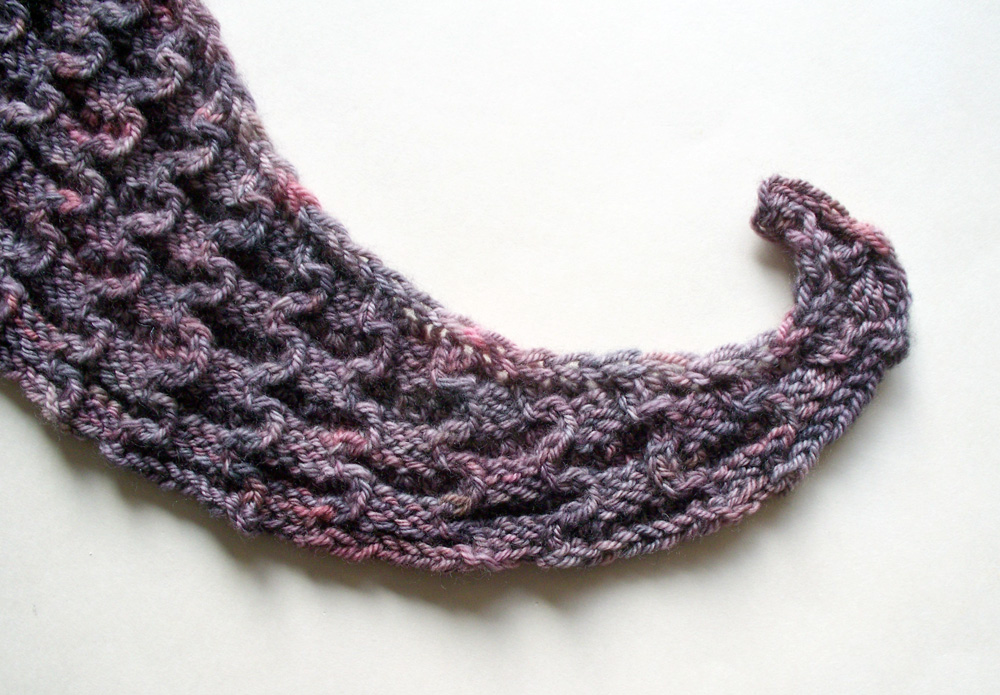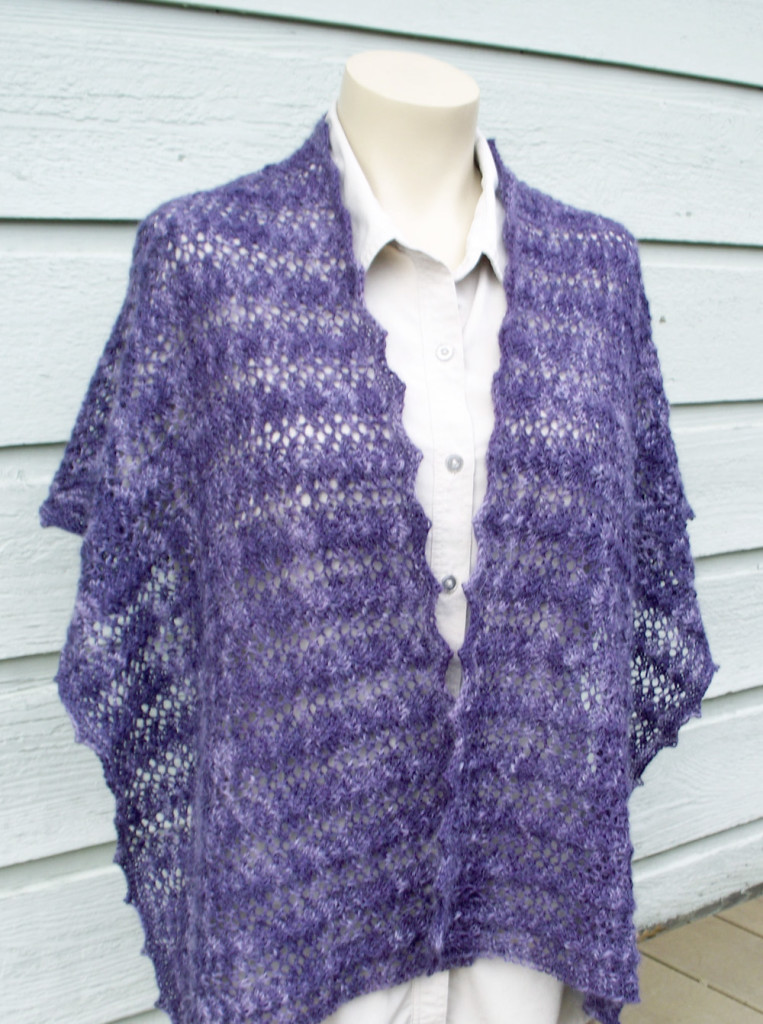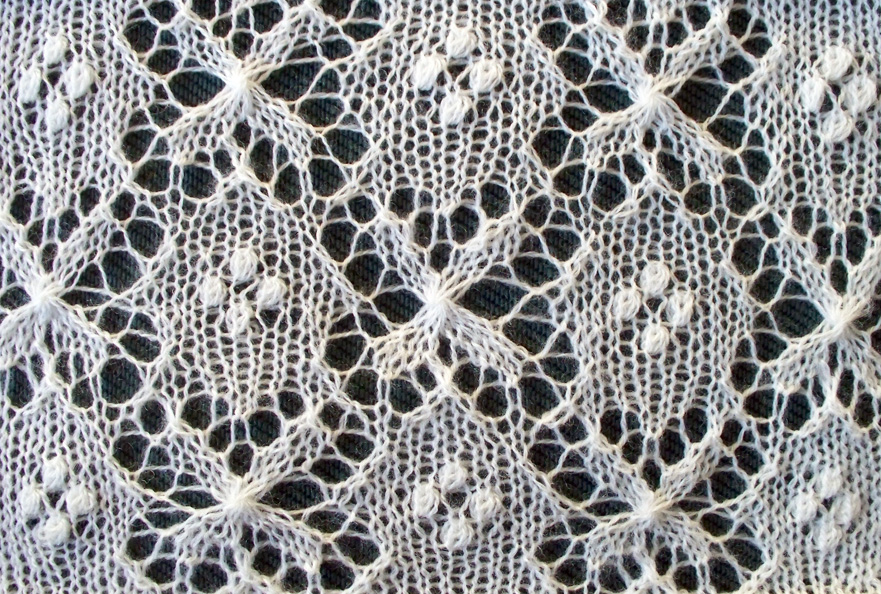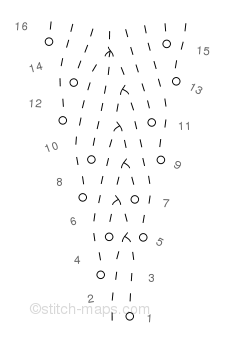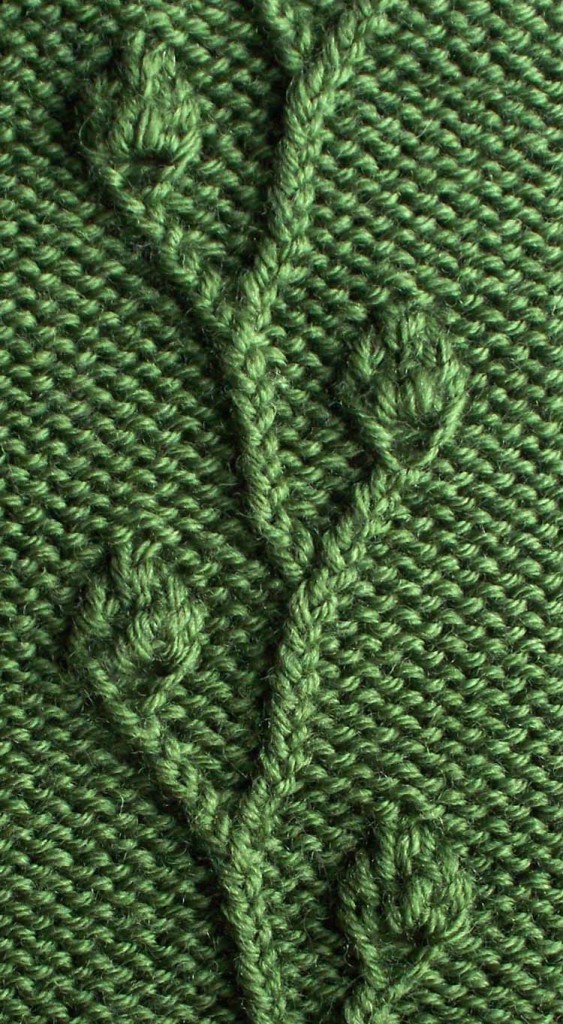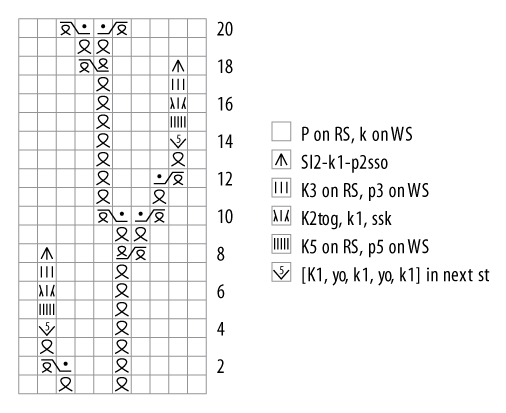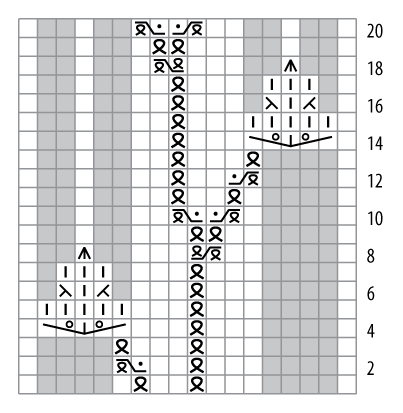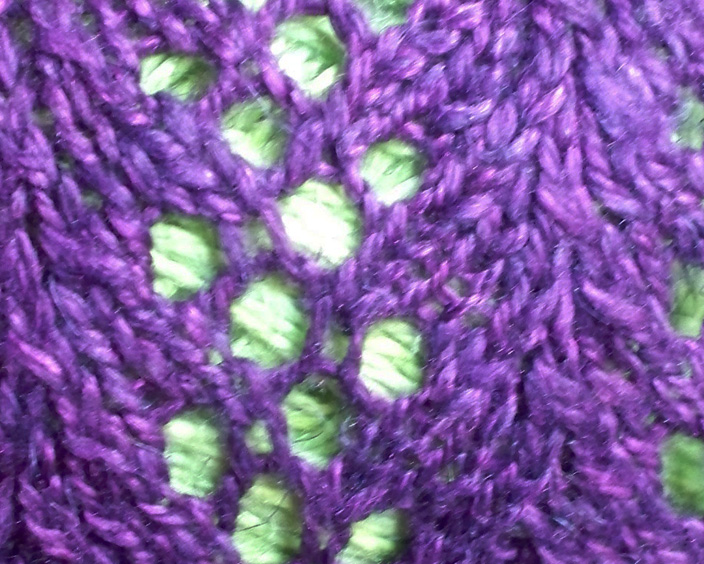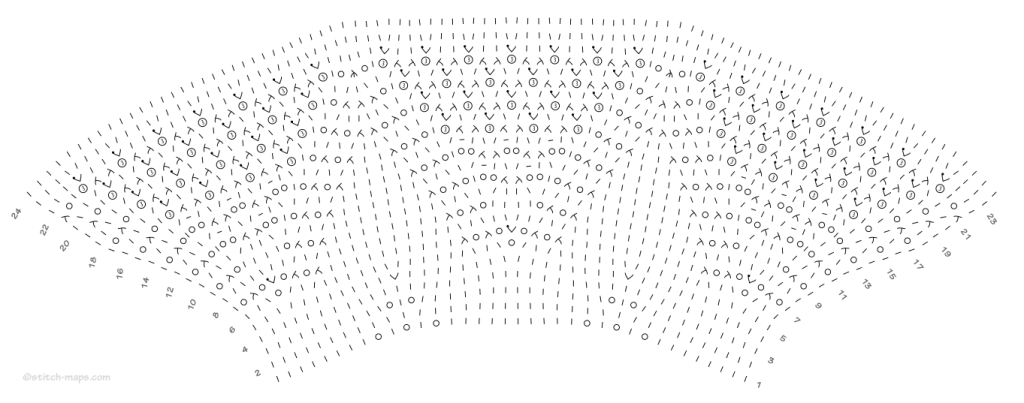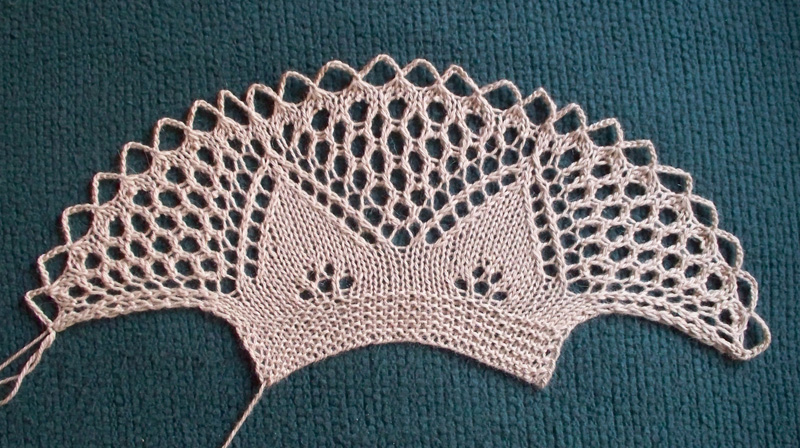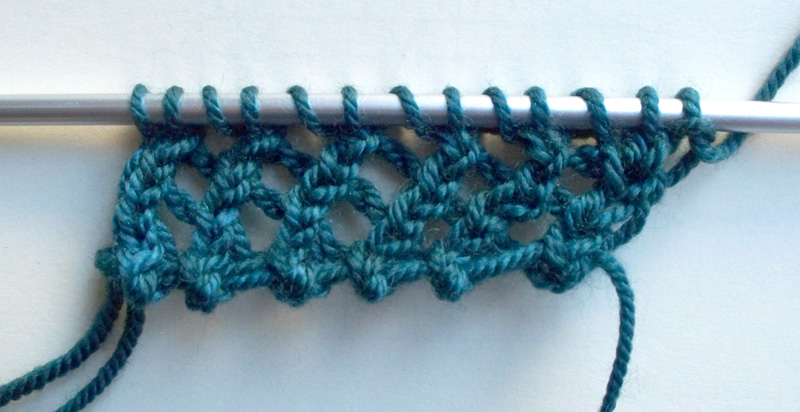And we have a winner in the Curls give-away! Jules O, I’ll contact you via email shortly. Everybody else: Thanks for playing! And thanks for the lovely comments on Hunter’s Curls and our collaboration!
Pavonated
By JC | January 15, 2015
So, as I was saying, I knit one of Hunter’s Curls a few weeks back. Now, one of the (many!) awesome things about Curls is that you can use just about any yarn, in any weight. The idea is that you choose your needle size to get a fabric whose drape you like, then you keep on knitting until the Curl is the size you want.
Assuming, of course, you have enough yarn.
I started out with a hankering for Pavonated, and two skeins of Malabrigo Finito. I love Pavonated’s stitch pattern – both sides of the fabric offer deep, inviting texture; each side is unique. Combined with the Finito on 3.5mm needles, the fabric was just luscious.
But two skeins of Finito only amount to 400 yards. When the yarn supply threatened to run out, I bound off… only to discover that my Curl wasn’t as generously-sized as I’d hoped for. And with its relatively modest size, I couldn’t quite figure out how I’d wear it. Nothing I tried seemed to click.
What to do? Getting another skein of yarn in the same dyelot wasn’t likely. Aggressive blocking would destroy the stitch pattern’s wonderful texture. My choices seemed to be (a) live with a smallish Curl, or (b) find another use for the Finito and re-start the Curl in another yarn.
Yeah. So I chose not to choose; I put the Curl into an extended time-out.
Until yesterday. I chose to accept the Curl’s small size, and set out to block it. And, ironically, it grew. Dramatically. The fabric simply relaxed far more than I expected, even with the gentlest possible blocking. (Serves me right for not test-blocking a swatch, I guess.) I’ve lost some of the deep texture, but my possibly-too-small Curl is now Just Right.
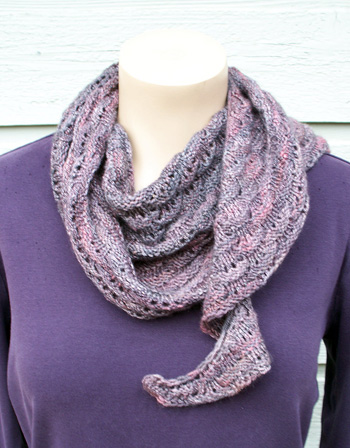
casually draped with wide end at back and curly bit in front

probably my favorite wearing option: a secure half-hitch
Update: Hunter has graciously offered to give the winner of the Curls give-away a copy of the electronic version of the book. So you get the physical book, and the ebook with links to the patterns’ stitch maps. Win-win! But remember: you have to comment on yesterday’s post to be entered to win.
Curls
By JC | January 14, 2015
Guess what I have?
It’s a copy of Curls: Versatile, Wearable Wraps to Knit at Any Gauge. Whee! So many pretty patterns.
For months now, I’ve had sneak peeks of the book-in-progress as Hunter and I collaborated on stitch maps for the electronic version of the book. I’ve even been knitting my own Curl.
Truthfully? I finished the knitting weeks ago. (Ah, the advantages of early sneak peeks!) But it’s been languishing since then, unblocked and unworn. More on that story in another blog post.
Back to the book… even with all those sneak peeks, even with a Curl practically done, I’m still thrilled that Hunter chose to share a physical copy of the book with me. There’s just something special about sitting down with a paper book, slowing flipping the pages, savoring every photo. Don’t you agree?
Actually, Hunter gave me TWO copies of the book. Want one? Comment on this blog post, and I’ll choose a lucky winner at random next Monday, the 19th. Use your real email address when you comment so I can contact you, okay? (I won’t use the email addresses for any other purpose, I promise!)
FO report
By JC | January 12, 2015
Remember that swatching I did a few weeks back? For the stole with a bend in it? Well, over the weekend I finished the stole.
From the back, it looks like your typical triangle shawl:
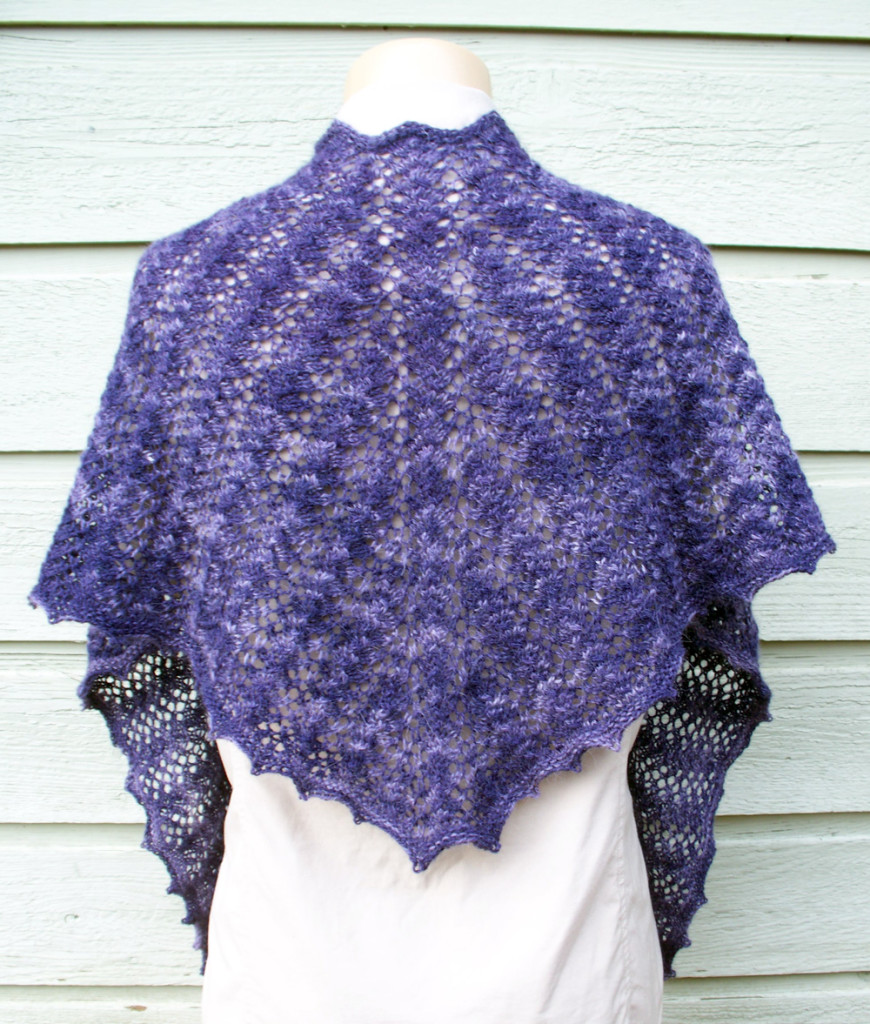
with a single pattern repeat running nicely down the middle,
and new repeats radiating off on each side
From the front, it looks more like a ruana:
As I’d hoped, the stole sits securely on the wearer’s shoulders, making it very easy to wear. Hmm. I may need to make more stoles in this shape, just for that reason.
Vital stats: Classic Elite Alpaca Sox, on 3.75 mm needles
Yesterday, in the Stitch-Maps.com news article announcing the availability of symbols for Estonian gathers, I mentioned that stitch maps are awesome for seeing which stitches to knit loosely on the previous row, to make the gathers easier to work.
I fear that I may not have made that point strongly enough.
In knitting the sample for Quatrefoil, I completely screwed up the first row with gathers. You see, Quatrefoil has “7-to-5 gathers,” places where you knit 7 stitches together, yarn over, knit those same 7 stitches together again, yarn over, and – yup, you guessed it – knit those 7 stitches together yet again, for a total of 5 new stitches. When you get right down to it, it’s kind of a nutty thing to do. I mean, seriously? Have you ever tried k7tog in fine laceweight yarn? Despite using pointy needles with long tapers, I could barely get both needle tips through all 7 stitches. After much struggling and gnashing of teeth, I completed a couple gathers… only to discover that I’d dropped a couple stitches in the process, and they were busy unraveling. sigh
But I learned from my mistakes. You know how nupps are enjoyable only if you work the 5 (or more) stitches of the increase loosely enough so that you can purl all of them together easily on the following row? Yeah, gathers are like that too. But here’s the thing: which stitches do you need to work loosely? It’s pretty clear when you follow the stitch map:
Here you can see which stitches of rows 6 and 20 need to be worked loosely: the ones that had been worked as “ssk, k2, yo, ssk, k1, k2tog” on the previous row, five stitches away from the nupps.
Once I clued in, working the gathers became tolerable, even – dare I say? – pleasant. But that should be obvious. Had the gathers remained a teeth-gnashing experience, I would’ve never bothered finishing the sample.
Yesterday I spent an obscene amount of time swatching, not to choose yarn, or needle size, or stitch pattern, but get this: to figure out how to shape some lace in the most attractive way possible.
Why? For some time now, I’ve wanted to knit up a couple more samples for my Wedge Shawl Design class. Sure, I have samples of lace “wedges” knit into triangular shawls, and even Faroese and circular shawls.
But at the least I’d like a sample of a stole with a bend in it, a bit of shaping for visual interest and (hopefully!) to help the stole sit on the wearer’s shoulders.
Of course I started by drawing up a stitch map. Well, okay, a few stitch maps. When I thought I had something that would work, I started swatching.
Yeah, it worked. New repeats of the pattern appear along a center “spine,” creating a bend. But that plain k1 spine? Boring!
Back to drawing board – literally. After sketching out some new stitch maps in pencil, I swatched a variation without a center spine.
Meh. Too… diffuse. Too many yarn overs creating too much mesh in the middle. Or something. Just not my cup of tea, I guess.
Ah, but what if we used a single repeat of the pattern as the spine?
Bingo! I like this.
The key in all these experiments was defining the wedge, the tiny bit of lace that could grow from a single stitch into a new pattern repeat.
Jeez, do I love playing with stitch maps.
Ooh, I just had an idea for a shawl with lace patterning like this and Hitchhiker-like shaping. Off to swatch some more…
Rosebuds
By JC | October 8, 2014
Sometimes I’m a little slow on the uptake. Stitch-Maps.com had been up and running for a few months before I started making use of stitch maps in the classes that I teach – notably, Lace Basics. And it wasn’t until this morning that I realized that, now that Stitch-Maps.com supports cable crosses, I could map one of my favorite stitch patterns: Rosebuds.
Rosebuds first appeared in Charts Made Simple, as an example in the “Counting stitches” chapter. It showcases symbols that stand for multiple stitches, even though they’re just one chart square wide,
These “squeeze a bunch of stitches in one square” symbols certainly made for a prettier chart than if “no stitch” symbols had been used instead.
But the whole point of stitch maps is to get rid of the chart grid, right?
I like how the stitch map shows the undulation in the twisted-stitch column. And even if the rosebuds distort the edges of the stitch map a bit (hey, that’s what you get when you try to represent a three-dimensional pouf in two dimensions), I find the stitch map clear and straightforward.
But then again, I may be a bit biased. 🙂
One of the best parts of Knitty is the Cool stuff! page. It always alerts me to stuff I want to check out further. Case in point: Everyday Lace by Heather Zoppetti. Jillian’s review had me popping over to Ravelry to check out the book’s patterns.
I like the Manor Ridge Shrug, though I don’t know where I’d wear a shrug. Still, I’m tempted to knit one. Maybe then I’d figure out where to wear it.
I like the Bellemont Cardigan, though I’d probably raise the neckline, shorten the body, add waist shaping, and change it from a raglan to a set-in sleeve garment (seamless, of course!). Oh, and I might change the lace panel too. I guess what I’m saying is that I like the idea of a lace panel flowing out from the base of a square neck opening.
And I like the Pequea Shell. Lace straps on a tank? Yes, please!
But that got me thinking. Wouldn’t be fun to have a solid panel behind the lace? In a contrast color, so it would peek through the lace? Ooh, I have just the yarn in my stash:
It’s Twisted Sisters Essential, a fascinating 60/40 blend of hemp (breathability, durability) and silk (shine). Purchased on sale (I admit it, I’m a sucker for sale bins), it’s been stewing in my stash for… two years? more? just waiting for the right project. Imagine: lace straps in purple, with lime green popping through. Or maybe not just the straps of a tank, but the entire upper front of a short-sleeve V-neck. With the trim in lime green, of course.
Yeah. That could be fun. But I don’t dare get started on it. Sheesh, you wouldn’t believe the number of UFOs I already have piled up.
Elizabeth
By JC | September 7, 2014
Remember the stitch map I showed you the other day for the Elizabeth edging?
That stitch map prompted this swatch:
I think I prefer this edging over the Coronet edging; as it turns out, I’m not terribly fond of its giant eyelet. But if I were to design a crescent shawl? I might have to audition a few other edgings first. Hmm, maybe if Coronet’s giant eyelet were replaced by a cluster of yarn overs, like Elizabeth’s cluster of five yarn overs…
This morning I read Hunter Hammersen’s blog post on Everyday Lace, and do you know what caught my eye? Not the eloquent account of the book’s virtues. Not the pictures of the pretty projects.
It was the trim at the bottom of the purple tunic. With a biased sort of lace mesh and a sawtooth edge, it might’ve been knit as a sawtooth edging from which stitches were picked up for the body of the tunic. (Who knows? I haven’t seen the book yet.) But looking at that trim, what grabbed me was this thought: What if you used the Channel Islands cast-on, and arranged its picots under the decrease lines of a lace mesh?
I’ve long been a fan of the Channel Islands cast-on – so stretchy! such wonderful sproing! And it looks fabulous under k1, p1 rib, with the cast-on’s picots arranged under the k1 ribs.
But lace on top of a Channel Islands cast-on? It needed to be tried immediately.
Yup. I think it looks pretty sweet. I gotta file this trick away in the “use this in a design someday” category.




